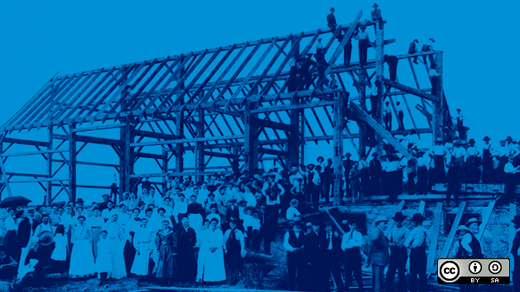No one would dispute that teams are critical to an organization’s success. Yet many teams feel they're not performing as well as they should be. Poor team performance, especially among teams that work across departments or functions, tend to breed silos, competing agendas, turf wars, and indecision; high performance produces organizational coherence and focus.
This article was originally posted on the Management Innovation eXchange (MIX), an open innovation project aimed at reinventing management for the 21st century.
Determining the membership of a team is frequently the most powerful lever that a leader can use to shape its performance. Many team leaders regret not employing this lever early enough or thoroughly enough. Still others neglect it entirely, assuming instead that factors such as titles, pay grades, or someone’s position on the org chart are enough to warrant team membership. Little surprise, then, that more than one-third of the executives we surveyed said their top teams did not have the right people and capabilities.
The key to getting the right people on a team is to be clear about how the team's performance will contribute to that of the larger organization, and then making sure the right people are in place to help make that happen. This sounds straightforward, but it's often more difficult than it seems. Sometimes teams have people on them who aren't necessary to reach a goal, just because they work in the same department or have the right title. In other cases, teams are missing someone who could help, often because they work in a different area of the organization or they don't see their goals aligned with the team's. Ensuring that the right people are on the team requires conscience attention and courage from the team leader; without these, the team might not be able to deliver.
That was certainly the case at a technology services company that had a struggling team of senior executives: fewer than one in five of its members thought it was highly respected or shared a common vision for the future, and only one in three thought it made a valuable contribution to corporate performance. The company’s customers were very dissatisfied—they rated its cost, quality, and service delivery at only 2.3 on a 7-point scale—and the team couldn’t even agree on the root causes.
A new CEO reorganized the company, creating a new strategy group and moving from a geography-based structure to one based on two customer-focused business units— for wholesale and for retail. He adapted the composition of his top team, making the difficult decision to remove two influential regional executives who had strongly resisted cross-organizational collaboration and adding the executive leading the strategy group and the two executives leading the retail and the wholesale businesses, respectively. The CEO then used a series of workshops to build trust and a spirit of collaboration among the members of his new team and to eliminate the old regional silo mentality. The team also changed its own performance metrics, adding customer service and satisfaction performance indicators to the traditional short-term sales ones.
Customers rated the company’s service at 4.3 a year later and at 5.4 two years later. Meanwhile, the top team, buoyed by these results, was now confident that it was better prepared to improve the company’s performance. In the words of one team member, “I wouldn’t have believed we could have come this far in just one year.”
Equally important to maintaining the right mix on a team is removing people who should not be on the team, either because their work is not aligned with the efforts of the team or because they are in some way hindering the team's work. The latter is often the case when a team (or the larger organization) shifts direction. This was the case at an energy company where team leaders were quite bold about bringing in new people with different skills and fresh energy, but were not equally courageous about taking off the old guard, who were kept on to pacify egos. Some of these legacy team members were disgruntled about the new direction and their negative energy complicated the team's work. Others had mentally checked out of the effort and contributed limited value to the team's progress.
Company and team leaders can guard against these situations by making it clear that just because someone is on a team this year, it doesn't mean they will stay with the team forever. Roles in an organization are fluid; roles on teams even more so. It's important to communicate that team membership will shift over time in order to maintain a core of energetic members focused on the current goals. Sometimes it's necessary to find new responsibilities for members who are being moved off the team.
While much of our work has focused on teams at the top of organizations, we believe most of the lessons are the same for team leaders at the middle of an organization, even if there might be less autonomy in terms of choosing the team's charge or membership.
What do you think? Can teams at all levels of the organization make themselves more productive and more efficient by creating the right configuration of experts and energy?








Comments are closed.